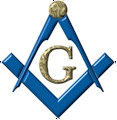The following was presented April 1, 2025, by Education Officer Tom Lewis.
History of Freemasonry
— published by The United Grand Lodge of England
The roots of Freemasonry are the subject of speculation, but the consensus among Masonic scholars are that they tie with medieval stonemasons that built our castles and cathedrals in Europe.
Early Freemasons were influenced by the imagery and customs of medieval operative stonemasons’ guilds. As the need for the building of these magnificent structures came to an end, this led to a desire to allow honorary members to join. The first recorded evidence of an English speculative Mason was in 1646 and would have been attended by others initiated prior to that.
On June 24th, 1717 — St. John’s Day, four London Lodges came together and declared themselves a Grand Lodge and elected their first Grand Master.
By 1723 the Grand Lodge had published its first rulebook — The Constitutions of FreeMasons — and was meeting quarterly. The Grand Lodge of Scotland was established a few years later in 1736.
ln 1751, a rival Grand Lodge appeared in London and called themselves “Ancients.” Both Grand Lodges existed side-by-side for 63 years until, in 1813, they united to form the United Grand Lodge of England. This brought about a great deal of standardization of ritual and procedures. lt practiced brotherly love, relief, truth, and integrity. lt attracted people from all walks of life and spread speculative Freemasonry across the globe.
By the year 1814, some 647 Lodges were in existence. By 1900 the number had increased to 2,800. The two World Wars had a great effect on Freemasonry. Thousands of Freemasons lost their lives in these wars, but it sparked a large increase in the number of new lodges being formed after the wars ended.
With the migration of colonists from England to America, along with them came Freemasonry. We still look to the Grand Lodges of England as the birthplace of all Lodges in America. The Grand Lodge of England celebrated its 300th year in 2017.

